Ruth Ellen Gruber's Blog, page 21
May 18, 2011
Lithuania -- Jewish cemetery site (with map)
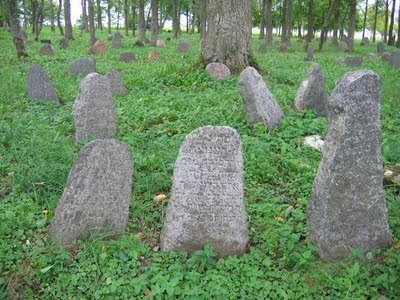 Old Jewish Cemetery, Valbanikas, Lithuania. Photo (c) Ruth Ellen Gruber
Old Jewish Cemetery, Valbanikas, Lithuania. Photo (c) Ruth Ellen GruberBy Ruth Ellen Gruber
I've just come across this web site about Jewish cemeteries in Lithuania -- which includes a map of all known cemetery locations, photographs from some cemeteries, and reports on efforts to clean some of them up and restore damaged gravestones. The epitaphs on a number of stones are also translated.
I visited a number of Jewish cemeteries in Lithuania in 2006, when I was updating Jewish Heritage Travel -- and most were in rather poor, neglected condition. The tombstones themselves were much less ornately carved than in other countries, such as Poland, Romania, and Ukraine.
I have already posted on this blog about my experience visiting the ruined Jewish cemetery in Kalvarija, where my great-grandfather came from -- and about efforts to repair the cemetery and read the gravestones there.
 Jewish cemetery in Kalvarija, 2006. Photo (c) Ruth Ellen Gruber
Jewish cemetery in Kalvarija, 2006. Photo (c) Ruth Ellen GruberOne of the most interesting (and well maintained) Jewish cemeteries I saw in Lithuania was the old Jewish cemetery in Valbanikas, a village that also has two disused masonry synagogue buildings. Some of the gravestones exhibited carving, and the cemetery was also one of the few that I found actually signposted from the road.
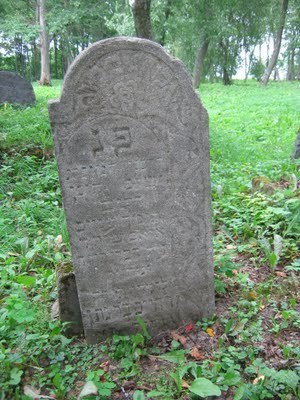 Carved gravestone in Valbanikas. Photo (c) Ruth Ellen Gruber
Carved gravestone in Valbanikas. Photo (c) Ruth Ellen Gruber
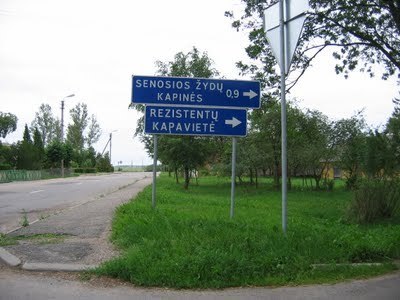 Signpost to Old Jewish Cemetery. Photo (c) Ruth Ellen Gruber
Signpost to Old Jewish Cemetery. Photo (c) Ruth Ellen Gruber
Published on May 18, 2011 05:26
Festivals -- At least 30 on my list of Jewish culture/arts/music etc festivals in Europe

By Ruth Ellen Gruber
I just added a few more events, bringing the number on my list of this year's Jewish culture/music/film/books/arts etc festivals around Europe to 30 -- and I know there are a lot more going on that I have not (yet) included. (Or which had already taken place before I got around to compiling the list...)
Everyone by now knows about the big Jewish culture festival in Krakow -- the oldest and largest festival, taking place at the end of June/beginning of July. But all around Europe you can find other varied events, big and small -- from the OyOyOy festival in northern Italy, to Bankito in Hungary to Yiddish Summer Weimar in Germany to UniJazz in the Czech Republic to the Life Festival at Oswiecim, Poland (the town where the Auschwitz camp is located), to Ethno Fusion in the courtyard of the synagogue in Belgrade.
The variety is great -- and so is the range of locations and festival focus. From book fairs highlighting local publishers to film festivals to klezmer and other Jewish music fests, to arts, to grand mash-ups, such as in Krakow, that feature a range of events, concerts, guided tours, targeted workshops and so on.
Locations range from big cities, to former (or present) Jewish quarters and neighborhoods, to villages to the countryside.
Published on May 18, 2011 01:39
May 16, 2011
Moldova -- Survey of Jewish Heritage Sites is Now Online
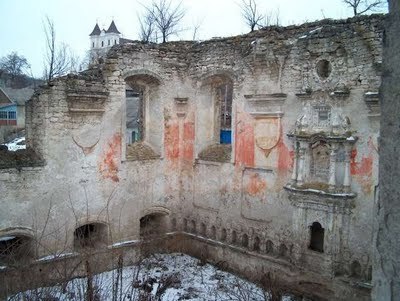 Ruined synagogue, Vadul Rashkov. Photo: U.S. Commission for the Preservation of America's Heritage Abroad
Ruined synagogue, Vadul Rashkov. Photo: U.S. Commission for the Preservation of America's Heritage AbroadBy Ruth Ellen Gruber
The first and most complete survey of Jewish heritage sites in Moldova has been published online on the website of the U.S. Commission for the Preservation of America's Heritage Abroad. It includes synagogue buildings, Jewish cemeteries, Holocaust memorials and sites of mass burials, Jewish communal buildings and other sites.
The survey was carried out by Igor Teper, and Sam Gruber, who oversaw the survey, carries a long report on the process -- with lots of pictures -- on his blog.
Few countries in Central and Eastern Europe have as rich a Jewish history and collection of Jewish history sites as small Moldova, nestled in between Romania and Ukraine. Long a crossroads of cultures, modern Moldova today, however, is little known and rarely mentioned. Jewish communities and Jewish heritage sites in neighboring countries garner more attention and more tourists, though most of the Jewish sites in the region are starved for funds for basic maintenance, let alone restoration. Seven years ago the U.S. Commission for the Preservation of America's Heritage, of which I was Research Director, teamed with the Joint Distribution Committee to identify, document and survey as many Jewish historical and Holocaust-related sites as possible within a year.Sam also posts his introduction to the Survey -- a summary of the history of Jewish sites in Moldova, as well as the typology of sites and their condition.
Prior to the Holocaust, the area that is present-day Moldova was home to a thriving Jewish culture that built and maintained a large number of community buildings for religious, educational, and charitable purposes. In addition, there were many Jewish cemeteries throughout the country serving Jewish communities. The second half of the 19th and the early 20th centuries witnessed the greatest growth of organized Jewish institutions and that is the period from which most surviving buildings date. These include synagogues and community buildings such as schools, hospitals, and old age homes. Some of these institutional buildings are the Jewish sites that have survived best because the facilities have been most easily adapted and reused by successor institutions, often providing services similar to the original.
The destruction wrought during the Holocaust, when German and Romanian occupiers destroyed many synagogues and other Jewish sites, was severe. Further destruction continued during the nearly half century of Soviet rule when scores of buildings were either demolished outright, or were destroyed over time by neglect; and when hundreds of buildings were confiscated by the state and adapted to new uses. It is only in the past several years that efforts have begun to identify all these sites. One important reason is to negotiate the return of many community properties to the Jewish community, or to arrange for proper financial compensation for many others which are not easily returned.
My friend, the Swiss diplomat Simon Geissbuhler, has written about some of these places in his book "Like Shells on a Shore: Synagogues and Jewish Cemeteries of Northern Moldavia."
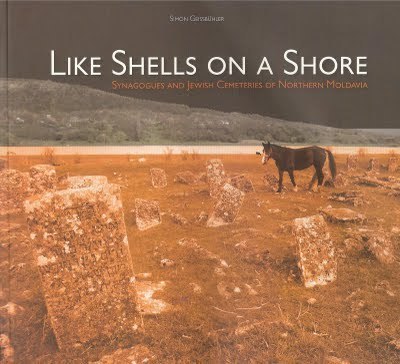
Bob Cohen posted a wonderful description on his Dumneazu blog about going home to his ancestral shtetls, Telenesti and Orhei.
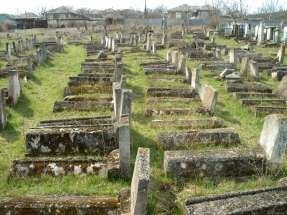 Jewish cemetery, Telenesti. Photo; U.S. Commission for the Preservation of America's Heritage Abroad
Jewish cemetery, Telenesti. Photo; U.S. Commission for the Preservation of America's Heritage Abroad
Published on May 16, 2011 01:47
May 14, 2011
What are your favorite overlooked Jewish sites? Forward wants to know
 Painted ceiling of synagogue in Siret, Romania. Photo (c) Ruth Ellen Gruber
Painted ceiling of synagogue in Siret, Romania. Photo (c) Ruth Ellen GruberBy Ruth Ellen Gruber
The "Schmooze" blog on The Forward wants to know readers' favorite -- overlooked -- Jewish sites, worldwide.
From the pre-Inquisition sites that dot Spain to farming villages in South America, some Jewish places are so surprising and little known that not even the most traveled among us have stumbled across them in our journeys. Help the Forward's Michael Luongo select the top 10 Jewish historical sites that most of us have never heard of, to rescue them from cultural oblivion and once again make them part of our cultural awareness. Whether it's Ballarat Synagogue in Australia, Ohel Moishe Synagogue in Asia or the Marrakech Mellah in the Middle East, nominate your favorite overlooked Jewish sites from around the world by posting comments here, or send your thoughts to TopTen@forward.com. Then watch for the final list in the July 1 issue of the Forward. Read more: http://blogs.forward.com/the-shmooze/...Back in 2007, when Jewish Heritage Travel came out, I was interviewed for JTA by Dinah Spritzer about my own "top ten" list of Jewish sites. It was really difficult to choose -- and in fact the article was headlined "So many sites, so little time."
My favorites -- as readers of this blog may have guessed -- are probably the elaborately carved Jewish cemeteries in northern Romania and western Ukraine (and parts of Poland).
Here's what I told Dinah were my top ten -- you can find pictures of many of them by searching this blog.:
* The historic Jewish cemeteries and painted synagogues in northern Romania. The tombstones feature elaborate carving and the synagogue interiors boast beautiful decoration. The most impressive cemeteries are the three in Siret, on the border with Ukraine. Nearby towns with painted synagogues and cemeteries include Botosani, Suceava, Radauti and Piatra Neamt.
* The Jewish cemeteries and ruins of fortress synagogues in Ukraine. In Sataniv, the synagogue hauntingly retains some of its interior decoration and the tombstones feature elaborate carving, including rare examples of a mystical motif showing three hares joined by the ears chasing each other in a circle. The village of Sharhorod has a fortress synagogue, fascinating cemeteries, extensive remains of shtetl architecture and a small Jewish community.
* The baroque synagogue and Jewish cemetery in the village of Mad, in northeastern Hungary. The synagogue recently underwent a full restoration.
* The synagogues in Lancut, in southeastern Poland, and in Tykocin, in northeastern Poland. Both have been restored and are used as Jewish museums.
* The old Jewish quarters, synagogues and cemeteries in the towns of Boskovice, Trebic and Lomnice, near Brno in the Czech Republic.
* Anything to do with the Hungarian architect Lipot Baumnhorn (1860-1932), modern Europe's most prolific designer of synagogues. Particularly recommended are the grand synagogue in Szeged, Hungary, and a ruined synagogue in Lucenec, Slovakia; Baumhorn's tomb in the Kozma utca Jewish cemetery in Budapest; and the monument to him outside the former synagogue he designed in Szolnok, Hungary.
* Wooden synagogues. Eastern Poland, Lithuania, Belarus and Ukraine once boasted elaborate wooden synagogues, all of which were destroyed by the Nazis, but about a dozen simple wooden synagogues survive in out-of-the way villages in Lithuania. Most look like barns. The ones in the villages of Kurkliai, Pakruojis and Ziezmariai are particularly striking.
* The elaborate synagogue in Subotica, Serbia, is an extraordinary example of Hungarian art nouveau architecture.
* The Holocaust monument complex in Belzec in southeastern Poland. Opened in 2004, this is a breathtaking and overwhelming memorial that uses the entire death camp site as a sculpture. It includes an excellent little museum.
* The Holocaust memorial in Plunge, Lithuania, features a profoundly moving installation of massive wooden sculptures by the Jewish wood-carver Jakob Bunkas and his artist friends.
Here's the full interview I gave Dinah:
PRAGUE -
When she set out to write the first comprehensive Jewish travel guidebook on the countries of the former Eastern bloc, Ruth Ellen Gruber might as well have been documenting the secret life of a New Guinea tribe of cannibals.
Seventeen years ago, little was known among mainstream U.S. travelers about the Jewish heritage of the countries that had just emerged from behind the Iron Curtain.
Cemeteries had been destroyed or forgotten, synagogues were collapsing and little information was available at the region's town halls or tourist centers about hundreds of years of Jewish history.
Now the fourth edition of Gruber's guidebook, "National Geographic Jewish Heritage Travel: A Guide to Eastern Europe," reveals a revolution in monument care and the return of Jewish culture -- or a least tributes to that culture -- in areas where it had long been dormant.
Researching the first guidebook, Gruber said she "could go to a town and they would mention a 17th-century cathedral or 19th-century palace, but nobody included anything Jewish."
Gruber, a JTA correspondent, said that among Jews and non-Jews in the United States and Europe, "there was an assumption that nothing had survived the Holocaust and there was very little desire to know that there was vestiges of the pre-Holocaust Jewish world."
How times have changed.
"I remember in 1990 looking at sites in Czechoslovakia, and we sort of recognized that if we saw a clump of dirt in a field and a broken wall it was probably a cemetery," said Gruber, who has residences in Budapest and near Rome. "Now all of these places are known and documented."
Jewish heritage travel has made it into the mainstream, according to Gruber, who has written two other books on the recent revival of Jewish culture in Central and Eastern Europe.
"It's extraordinary, and extraordinarily important, that National Geographic is now publishing" her new guidebook, she said. Nation! al Geogr aphic is "recognized over all the world. It gives an imprimatur of importance to Jewish sites."
The book includes everything from directions to little-known heritage sites to addresses of Jewish communal institutions.
Insider anecdotes and hard-to-find information is presented for Poland, Lithuania, Ukraine, the Czech Republic, Slovakia, Hungary, Romania, Slovenia, Croatia, Bosnia and Herzegovina, Serbia, Macedonia, Montenegro and Bulgaria.
The restoration of so many Jewish monuments in these countries is due to myriad factors -- generous help from the West; decent planning by local governments, renewed Jewish community pride, non-Jewish devotion to history and the realization that Jewish sites could attract tourism.
"The Czech Republic is where things have changed the most," Gruber said.
"Look at the synagogue at Ustek," said Gruber, who notes in her book that the 18th-century synagogue, located on a scenic perch, was just a "pile of rubble" in the early 1990s.
"It's been restored in a fantastic way," she said. "In three other towns near Ustek the Jewish cemeteries were scenes of devastation. Now they are cleaned up, marked with monuments."
Throughout the Czech Republic there are exhibitions in restored synagogues, and that in 2006 the country devoted an entire year to Jewish culture, staging art shows, concerts and theater productions.
What went on in the Czech Republic has gone on to some extent across Central and Eastern Europe, said Gruber, who also has written "Virtually Jewish: Reinventing Jewish Culture in Europe" and "Upon The Doorposts Of Thy House: Jewish Life In East-Central Europe, Yesterday And Today."
The rebirth of Krakow's former Jewish district, Kazimierz, has not only led to the reclaiming of Jewish synagogues there but to a more general revival that has turned the neighborhood into a top night spot with Jewish-themed restaurants and trendy bars.
"There was only one cafe there! when my book first came out," Gruber said.
She gave mixed reviews to monument care in the rest of Poland, but said there were plenty of sites that would impress tourists, such as Lesko in southeastern Poland.
"It has a beautiful synagogue that is a landmark of the town, it's an art gallery," Gruber said. "The cemetery has about 2,000 intricately decorated tombstones dating back to the 16th century."
Gruber also had high praise for the Holocaust monument at Belzec, where the Nazis murdered some 500,000 Jews from the Galicia region in 1942. The monument was erected in 2004 with the help of the American Jewish Committee.
"It's breathtaking and unbelievable," Gruber said of the monument, which features slag that appears like a field of ashes and iron letters spelling out the name of former Jewish shtetls in the region.
In Lithuania, Belarus, Ukraine and eastern Poland, surviving but little-known wooden synagogues have become Jewish attractions, Gruber noted.
"About a dozen wooden synagogues have been identified within the past decade, and are really worth seeing," she said.
Of the more ornate Jewish cemeteries, Gruber urges tourists not to miss those in Romania and Ukraine because of their "sheer architectural beauty."
There is a small but vocal living Jewish presence in the region, and Gruber points out that has also undergone a revival.
For example, Prague's Jewish community has only 1,500 registered Jews, but "a tourist can now go to five or six services on Shabbat," Gruber noted.
That contrasts with the communities' moribund state during the communist era, when actively participating in religious life could lead to persecution by the secret police.
Gruber acknowledged that some people have an image of the former Eastern bloc as teeming with anti-Semitism, an image she seeks to dispel. Gruber notes a tremendous sea change among non-Jews -- not just toward Jews but toward foreigners in general,! in coun tries where xenophobia once was prevalent.
In Luboml, Ukraine, Gruber met a local young historian obsessed with Jewish history, as is often the case for historians reclaiming their countries' past after communism made Jewish topics more or less forbidden.
"There had been a Jewish distillery; he gave me the labels of bottles to take home," she said. "You meet people like that all over the place. Of course you sometimes meet people who are awful, but that's true wherever you go."
Published on May 14, 2011 02:07
May 12, 2011
Great Britain -- New book on Synagogues of Britain by Sharman Kadish

By Ruth Ellen Gruber
Mazel tov to Dr. Sharman Kadish on the publication this month of her new book, The Synagogues of Britain and Ireland (Yale University Press). The 412-page book is the most detailed treatment of British synagogue to be published, and it is lavishly illustrated with previously unpublished images and specially taken photographs. It traces the architecture of the synagogue in Britain and Ireland from its discreet Georgian- and Regency-era beginnings to the golden age of the grand "cathedral synagogues" of the High Victorian period.
The religious buildings of the Jewish community in Britain have never been explored in print. Sharman Kadish sheds light on obscure and sometimes underappreciated architects who designed synagogues for all types of worshipers--from Orthodox and Reform congregations to Yiddish-speaking immigrants in the 1900s. She examines the relationship between architectural style and minority identity in British society and looks at design issues in the contemporary synagogue.Sharman Kadish is the Director of Jewish Heritage UK and a research fellow and lecturer at the Centre for Jewish Studies at the University of Manchester. Her numerous publications include the companion guidebooks Jewish Heritage in England and Jewish Heritage in Gibraltar.
Published on May 12, 2011 10:38
Slovenia -- Maribor Synagogue Becomes Independent Jewish Culture and Research Institute; Calls for Participants in Arts Competition
 Photo: Tamino Petelinsek/STABy Ruth Ellen Gruber
Photo: Tamino Petelinsek/STABy Ruth Ellen GruberThe medieval synagogue in Maribor, Slovenia, which was restored 10 years ago to become a culture center, was transformed last month into "an independent public institution serving as a museum and a cultural and research center dedicated to preserving the heritage of what was once a thriving Jewish community in Slovenia."
To celebrate both the 10th anniversary of the restoration and the new independent status of the institution, the Maribor Synagogue - the Center of Jewish Cultural Heritage has issued a call for artists to take part in an international competition called "Images of the Maribor Synagogue".
The synagogue is one of Slovenia's most important Jewish heritage sites and one of the oldest known synagogues in Europe.
I have visited the synagogue in Maribor several times, including before its restoration. The compact building, with a high peaked roof, stands in the heart of the medieval Jewish quarter (still known as Zidovska ulica) and is believed to date from the 13th century. Its exact date and original appearance are unknown, however. Already in 1501 -- a few years after the Jews were expelled from that part of Slovenia -- it was converted into a church. It functioned as a church until the late 18th century. In the early 19th century it was sold and turned into a warehouse and, later, a dwelling.
Long empty, the building was renovated in the 1990s and reopened as a cultural center in 2001. The only physical evidence that the building was once a synagogue is the large niche in the eastern wall, presumably for the Ark. Also, numerous stone fragments with carved Hebrew inscriptions were found during excavations for the renovation.
Here is the full press release about the arts competition:
In Maribor, Slovenia's second largest city, stands one of the oldest preserved synagogues in Central Europe. Well preserved and renovated it's an exceptional, world-renowned cultural and historical monument. Maribor was until the exile of Jews in 1496 one of the cores of medieval Jewry, radiating into the broader European space. In the second quarter of the 15th century the synagogue was the seat of high rabbinate for the lands Styria, Carinthia and Carniola, but after Jews were exiled from Maribor it was transformed into a catholic church.
From the end of 18th century until the end of last century the space of the former synagogue was used as a warehouse and later as residential premises. Only after many renovations during the 90-ties the synagogue's former image was restored. Since April 2001 the synagogue is the location of the cultural centre Maribor Synagogue ; many cultural events, including historical and art exhibitions, lectures, presentations, literary evenings, concerts … had been organized in its interiors. In the past few years the greater part of the program is concerned with and dedicated to the presentation of Jewish history, tradition and cultural heritage.
The synagogue is a simple gothic building ; the ground plan is rectangular with two vaulted fields. Written records first mentioned it in 1429, but particular architectural fragments, dating to the 14th and late 13th century, indicate that it's undeniably older. On its south side three gothic stepped buttresses, that support it on the former medieval town walls, can be seen. The eastern side is embellished by a rosette and two tall, narrow windows. On the inner side of the synagogue a niche, where the Tora scroll was most probably held, is still preserved.
The Maribor synagogue is without doubt a remarkable cultural-historical monument and is considered amongst architectural rarities not only in Slovenia but also internationally. And its specific position in the former Jewish quarter inside the town walls has since medieval times fascinated and inspired artists from Europe and throughout the world. This year the cultural center Maribor Synagogue, since April 2011 the Center of Jewish Cultural Heritage, is celebrating its decennial anniversary, and to mark this special occasion we're proud to announce an open call to artists for the international fine arts competition Images of the Maribor Synagogue.
We would like to encourage Slovene and foreign artist to fully experience this important and interesting cultural-historical building that mirrors the faith of Jewry in Maribor, Slovenia and Europe. Authors can present their visions in different drawing, painting or/and graphic techniques, unlimited in their artistic expression.
A three-member jury, consisting of acclaimed experts in the fields of art history, history and art, will review the entered art works. The selected works will be shown at an exhibition at the Maribor Synagogue. This competition has three awards, first, second and third place. The winners and authors of the chosen works will be notified on the jury's decision until February 2012. The organizer is withholding the right not to reward the awards, on the ground of the jury's decision. The exhibition of selected works will be on display in the Maribor Synagogue from June until August 2012.
The deadline for submitting entry is November 30th 2011. Authors have to submit a filled-in application form, brief curriculum vitae and reproductions of entered works in a digital form with a corresponding color scale. The reproductions have to be prepared and submitted in resolution suitable for publishing in printed media. Application is to be submitted electronically to the following Email : koordinator@sinagogamaribor.si. Authors can enter no more than three fine art works (drawing, painting, graphic, mixed techniques), please note that photographs and sculptures will not be taken into consideration.
Works formats : • Paintings on canvas : min. size : 50 × 70 cm (19,7 × 27,6 inch), max. size : 100 × 120 cm (39,4 × 47,2 inch). • Graphics, aquarelles, drawings : min. size : 21 × 30 cm (8,3 × 11,8 inch ; format A4), max. size : 100 × 120 cm (39,4 × 47,2 inch).
The terms and conditions for entering the competition are as follows : • With the entry to this competition the authors must create new works, previously never shown on exhibition nor published in the media. • With the entry to this competition the authors attest that the works submitted are their sole and original works. • With the entry to this competition the authors attest for the accuracy of the information supplied in the application form. • With the entry to this competition the authors accept, that any costs regarding their entry and participation in the competition (material, postal fees, shipping and transport fees for the works in case they'll be selected for the exhibition ; and travel and accommodation expenses in case of the author's visit to the exhibition site) are at their expense. • The organizer of the competition attest, that the authors works stay at all time in the authors ownership and will be returned after the closure of the exhibition.
IMPORTANT : Please note that the application form, brief CV and titles of the works, on the application form as well as on the digital files of the entered reproductions, must be filled-in either in English or Slovene, other languages will not be taken into consideration.
Published on May 12, 2011 09:36
May 11, 2011
Italy -- The Jewish Music of Rome
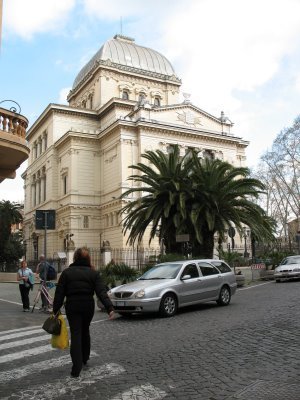 Great Synagogue, Rome. Photo: Ruth Ellen Gruber
Great Synagogue, Rome. Photo: Ruth Ellen GruberBy Ruth Ellen Gruber
Francesco Spagnolo -- Curator of The Magnes Collection of Jewish Art and Life at the University of California, Berkeley and a longtime friend and sounding board for many of my ideas on Jews and Jewish culture -- has written a nice essay on the long history of the Jewish music of Rome.
The history of Jewish music in Italy is long, fascinating, and filled with contradictions. Its length is due to the very history of Italian Jewry, whose origins go back more that two thousand years. Fascination stems from the meeting of the music of the Jewish Diaspora, represented in Italy by an unprecedented interaction among distinct Italian, Ashkenazi and Sephardic traditions, with Italian musical culture and its innumerable cultural, regional and linguistic differences. The contradictions concern the thousand identities, visible and invisible, of the Jews of Italy: the secrecy of the ghettos, places of exclusion and also of explosive musical ferments emblematically represented in the works of Salamone Rossi (ca. 1570-1630); the conflicts and the hidden consonances between Judaism and Christianity, and the distance between the liturgy of the Church and that of the synagogue, at once brief and unattainable; the integration, and the cultural symbiosis, of Jews and Italy, and the shared feeling so beautifully expressed by Giuseppe Verdi's Nabucco (1842); the relentless liturgical modernization carried out during the Emancipation in the 19th century, which forever changed the "soundscape" of the Italian synagogue with the addition of choral repertoires and instrumental accompaniment imitating the operatic styles of Gioachino Rossini and others; and the tragic character of the Fascist parable, ended in the Holocaust and the destruction of Italian synagogue life.continue reading by clicking HERE
Published on May 11, 2011 11:33
Bosnia-Hercegovina -- Report on Jewish Heritage is Online
By Ruth Ellen Gruber
A comprehensive survey of Jewish heritage sites in Bosnia-Hercegovina has recently been posted online by the U.S. Commission for the Preservation of America's Heritage Abroad, which oversaw its research and compilation.
It includes information on synagogues, Jewish cemeteries and Holocaust sites in about three dozen towns. Much of the data dates from the early to mid-2000s.
Most of the sites are abandoned or ruined -- and some were the scene of heavy fighting during the Bosnian war in the early 1990s. As late as 2005, the report notes, mines were believed to still prove a danger in the ruined Jewish cemetery in Derwenta.
Much of the onsite research was carried out by Ivan Ceresnjes, a former leader of the Bosnian Jewish community who is now with the Center for Jewish Art in Jerusalem.
A comprehensive survey of Jewish heritage sites in Bosnia-Hercegovina has recently been posted online by the U.S. Commission for the Preservation of America's Heritage Abroad, which oversaw its research and compilation.
It includes information on synagogues, Jewish cemeteries and Holocaust sites in about three dozen towns. Much of the data dates from the early to mid-2000s.
Most of the sites are abandoned or ruined -- and some were the scene of heavy fighting during the Bosnian war in the early 1990s. As late as 2005, the report notes, mines were believed to still prove a danger in the ruined Jewish cemetery in Derwenta.
Much of the onsite research was carried out by Ivan Ceresnjes, a former leader of the Bosnian Jewish community who is now with the Center for Jewish Art in Jerusalem.
Published on May 11, 2011 09:02
May 9, 2011
Italy -- Jewish Book Festival, Ferrara
By Ruth Ellen Gruber
I spent Sunday afternoon at the big Festival of the Jewish Book in Italy. A beautiful, sunny spring day, lots of books (all in Italian, issued by Italian publishers), lots of people....
 Sign for the Jewish book festival outside the cathedral. Photo (c) Ruth Ellen Gruber
Sign for the Jewish book festival outside the cathedral. Photo (c) Ruth Ellen Gruber
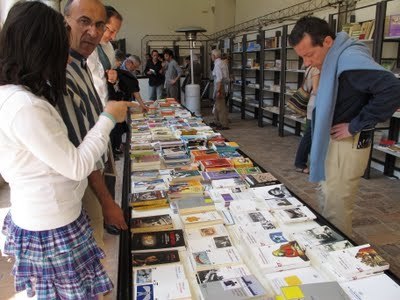 Photo (c) Ruth Ellen Gruber
Photo (c) Ruth Ellen Gruber
most of the action, including talks, "debates", food-tasting and schmoozing,
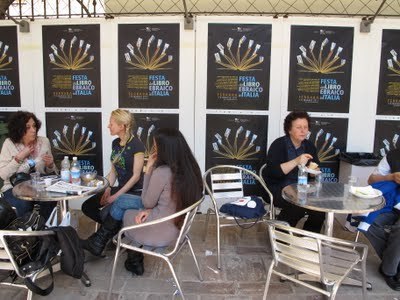 Schmoozing at the festival. Photo (c) Ruth Ellen Gruber
Schmoozing at the festival. Photo (c) Ruth Ellen Gruber
took place in a graceful cloister in the historic city center near the castle,
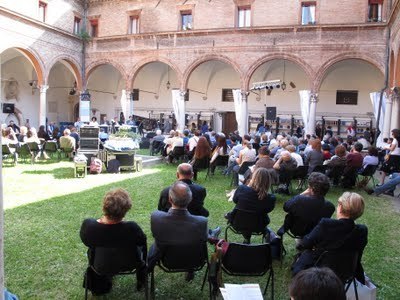 An event at the book festival. Photo (c) Ruth Ellen Gruber
An event at the book festival. Photo (c) Ruth Ellen Gruber
but I took in several linked exhibitions, including one that displayed all the 52 entries (including the winner by the Bologna-based Studio Arco-Architettura) for the building design of the National Museum of Italian Jewish and the Shoah (MEIS) now in development, which will occupy the building of an old prison in Ferrara.
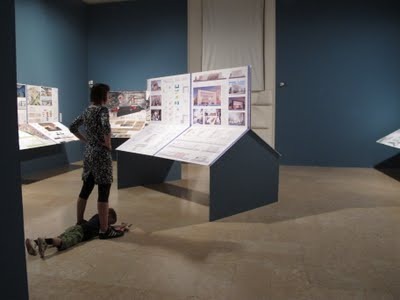 Photo (c) Ruth Ellen Gruber
Photo (c) Ruth Ellen Gruber
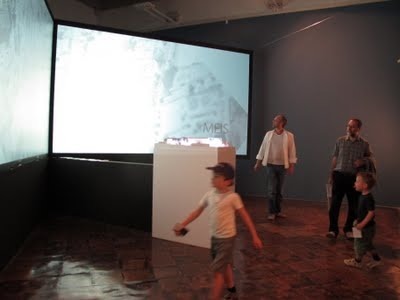 Photo (c) Ruth Ellen Gruber
Photo (c) Ruth Ellen Gruber
I spent Sunday afternoon at the big Festival of the Jewish Book in Italy. A beautiful, sunny spring day, lots of books (all in Italian, issued by Italian publishers), lots of people....
 Sign for the Jewish book festival outside the cathedral. Photo (c) Ruth Ellen Gruber
Sign for the Jewish book festival outside the cathedral. Photo (c) Ruth Ellen Gruber Photo (c) Ruth Ellen Gruber
Photo (c) Ruth Ellen Grubermost of the action, including talks, "debates", food-tasting and schmoozing,
 Schmoozing at the festival. Photo (c) Ruth Ellen Gruber
Schmoozing at the festival. Photo (c) Ruth Ellen Grubertook place in a graceful cloister in the historic city center near the castle,
 An event at the book festival. Photo (c) Ruth Ellen Gruber
An event at the book festival. Photo (c) Ruth Ellen Gruberbut I took in several linked exhibitions, including one that displayed all the 52 entries (including the winner by the Bologna-based Studio Arco-Architettura) for the building design of the National Museum of Italian Jewish and the Shoah (MEIS) now in development, which will occupy the building of an old prison in Ferrara.
 Photo (c) Ruth Ellen Gruber
Photo (c) Ruth Ellen Gruber
 Photo (c) Ruth Ellen Gruber
Photo (c) Ruth Ellen Gruber
Published on May 09, 2011 15:19
May 5, 2011
JTA Launches Online Searchable Archive -- Tremendous Resource
By Ruth Ellen Gruber
Bravo and Mazel Tov!
JTA -- the archaically named Jewish Telegraphic Agency -- has announced the launch of a tremendous new online resource -- a digitized archive of all its articles since 1923 -- a quarter of a million articles.
I've written for JTA for many years, and many pieces that I and others have published for the service will be of interest to this blog.
CLICK HERE, for example, for my 1989 article about the restoration and rededication of the great synagogue in Szeged, Hungary.
Or CLICK HERE for my 1999 article on the first European Day of Jewish Culture.
Or CLICK HERE on the a 1976 article about the restoration of the medieval synagogue in Sopron, Hungary
OR CLICK HERE for a 1982 article by Maurice Samuelson about renovations at the Jewish Museum in Budapest
Published on May 05, 2011 07:51



